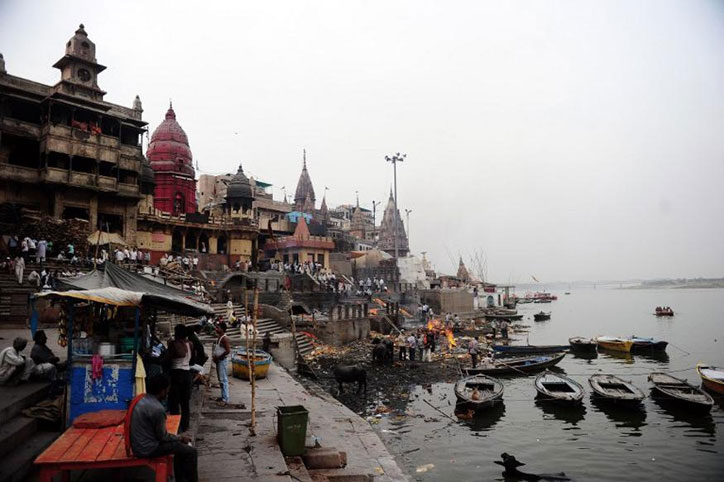 Varanasi:
Varanasi: Toxic particulate pollution in this holy city, which Prime Minister Narendra Modi represents in parliament and intends to make a Smart City like Kyoto in Japan, has resulted in an eight-fold increase in respiratory diseases among children in the past decade, says a new report.
The report, "Varanasi Chokes", corroborating observations from private doctors, blames abnormally high air pollution levels -- that spiked five times higher than the average this winter for several days -- for the rise in asthma cases.
It highlighted an increasing trend in the particulate matter levels in the city along with the rising number of respiratory ailments.
"There is a noticeable increase in asthma cases not only in my clinic but in other clinics too," Pradeep Jindal, who is based the in the Sigra area of this ancient town located along the Ganga river, told IANS.
He said that in the past 10 years, he has observed an eight-fold increase in respiratory diseases and noted that the worst affected are children. His clinical case-load has shifted drastically and 80 per cent of his cases are now respiratory related.
Jindal's toxic tales were affirmed by pulmonologist R.N. Vajpayee, who runs his clinic in the Lanka area.
"One of the major problems in the city is road dust that causes dust storms and high pollution levels during summer," he said, adding that bronchial allergies and chest infections have increased manifold in the past four-five years.
Aishwarya Madineni, an independent researcher and author of the "Varanasi Chokes" report released here this week, told IANS the city's respirable suspended particulate matter (RSPM) or PM10 seems to be peaking both in summer and in winter.
Particulate matter is largely generated by vehicles, rampant construction, road dust and other industrial processes.
This year, the summertime pollution was between 200 and 230 micrograms per cubic metre (Aug/m3) in the ambient air, an all-time high since 2010.
As per accepted global standards, the concentration of particulate matters should not exceed 60 Aug/m3 in a 24-hour average.
The concentration of RSPM was between 140 and 150 Aug/m3 last winter, says the report by the Centre for Environment and Energy Development (CEED), IndiaSpend and Care4Air.
Since 2010, the annual averages of particulates have been consistently increasing. This winter, the levels were at more than 300 ug/m3 for several days in a row.
Madineni said despite being identified as one of the most critically-polluted zones in the country, Varanasi has only one online pollution monitoring station as against New Delhi's 13.
Even data collected under the Right to Information Act revealed significant gaps in PM10 values recorded in Varanasi, she said, adding: "This city certainly requires a surgical strike on air quality."
Quoting the Central Pollution Control Board's 2015 data, Madineni said Varanasi had no "good air days" last year out of the 227 days on which air pollution data was collected.
Lauri Myllyvirta, air pollution specialist with Greenpeace East Asia, blamed coal-fired projects for Varanasi'a toxic particulate pollution. He also said almost a quarter of India's deaths are linked to air pollution (16 per cent of the population).
"India has almost made good progress with monitoring air pollution but it still has a long way to go on a comprehensive monitoring network and coherent assessment of all cities' annual average levels," Myllyvirta said via videoconferencing from New York.
He said while air quality in several parts of China started improving from 2011 owing to strictly-controlled and stronger emission and fuel quality standards, it deteriorated severely in parts of India, particularly in the north, during the same period -- with 2015 being the most polluted year on record.
 Varanasi: Toxic particulate pollution in this holy city, which Prime Minister Narendra Modi represents in parliament and intends to make a Smart City like Kyoto in Japan, has resulted in an eight-fold increase in respiratory diseases among children in the past decade, says a new report.
Varanasi: Toxic particulate pollution in this holy city, which Prime Minister Narendra Modi represents in parliament and intends to make a Smart City like Kyoto in Japan, has resulted in an eight-fold increase in respiratory diseases among children in the past decade, says a new report.